Weight Lifting Is Good For Children.

Parents who are worried about their children’s safety often ask us this question. They want to keep them active, but they don’t want the risk of injury.
What is the answer?
Yes! Strength training is beneficial for children, despite what you may have heard. However, there are a few cautions.
Weight training, like any other form of exercise, can be dangerous if done incorrectly.
Here’s what you need to know before you take your children to the gym.
Children are more active, happier and fatter today than ever before
It has been long held that weights and gyms are dangerous for children. Lifting will stunt children’s growth”, “they may get too large”, “they could injure themselves “…, the list goes on!
Unfortunately, those who spread these myths miss the forest for the trees.
Think again if you think that your kids are spending most of their time outside playing and do not need a gym.
According to UK statistics, by the time children finish primary school, a quarter are obese and another 15% are overweight.
Only 44.6% (or 56% of children aged between 5 and 16) of kids meet the 60-minute daily government guidelines [2] for physical activity.

Not only are children’s physical health needs suffering, but their mental health as well.
The likelihood that young people will develop a mental illness has increased by 50 percent in the last three-year period. If your child is in a class with 30 students, five of them are likely to have a mental illness [3].
Several governments around the world have attempted to solve the problem of child obesity, but failed.
It may not be possible to find a panacea for today’s crisis. It’s obvious that misguided advice about children and resistance training may be holding us back.
Why?
Resistance training is not a problem, but a part of the solution.
Resistance training is one of our most powerful tools to combat the obesity epidemic.
Strength training has consistently been proven to improve everything from growth and development, bone mineral density, heart function and body composition. It also reduces the risk of lifestyle diseases that are preventable.
You may want to reconsider if you think that weightlifting is not suitable for children.
Resistance training can be fun, safe and effective for kids of any age.

Weight training is not more dangerous than other kid-friendly activities
Strength training and gym activities are considered by many to be bad for kids. They may not be concerned about the safety of their children in more physically demanding sports and activities.
Any sport or physical activity that involves movement carries some risk. Around 11-22% school-age kids are injured every year while participating in traditional sports.
A four-year study revealed that running accounted for nearly three-quarters (75%) of all injuries that occurred during this time period [4]. According to other research, gymnastics and soccer are the two most common sports that cause injuries in children [5].
Strength training is responsible for less than 1% of all injuries among children who are physically active [6]. Not a very high-risk sport!
What are the advantages of resistance training compared to other forms of exercise, if any?
Here are some easy sales.

Football is the most common sport that causes injuries to children.
Children who do resistance training reap many benefits
Weight training is beneficial for all children, whether they are sports-crazy or teens who prefer to stay in their rooms.
Here are a few.
1. Healthy Kids
Which would you prefer? The latest computer game, or a life free of preventable diseases and injuries?
We doubt it’s a difficult decision. This is the choice many parents make on a daily, if not weekly basis.
If you want to give your child the best life, you cannot ignore the gift of good health.
being overweight or obese in childhood is a good predictor for adulthood obesity, and its associated risks. [7],[8]. A study found that 60% of obese 5-10 year-olds are at risk for developing at least one heart-related warning sign. This could include high blood pressure or hyperlipidemia, as well as poor blood sugar control. At least 20% of children showed signs [9]. According to estimates, having hypertension by age 20 can reduce life expectancy around 10 years [10].
Exercise of any kind is beneficial in reducing the risk of serious diseases. Resistance training is particularly effective in improving cardiovascular risk, muscle strength and endurance. It also reduces the risk of osteoporosis, and improves quality of life.
Strength training can even help your child achieve better health and fitness for the rest of their life [12].

2. Kids who are less likely to get injured
What is the best way to avoid spending a lot of time in A&E when your child brings home a sports souvenir from a sporting event?
Weight training is a great way to get fit.
Lifting weights will help your child to avoid muscular imbalances, and increase joint strength.
The research consistently shows that resistance exercise improves athletic performance and reduces fractures. It also decreases sports-related injuries.
This means less time under the duvet and more time to do what they enjoy.

3. Confident kids
The inevitable physical and emotional changes that come with puberty can make teenage years a bit awkward.
No wonder that many teens, particularly girls, are embarrassed to participate in sports and other forms or exercise.
Strength training is proven to improve self-confidence and success. This can then lead to an improved sense of self-worth, body confidence and self-esteem [17].
Weight lifting is a great way to get your kids excited about exercising, especially if they would rather not sweat on the football field.
Strength training is a great alternative to team sports for children who aren’t naturally sporty or don’t do well in group activities.
Resistance training is beneficial because it can be scaled to suit any level of ability, starting point or limitations.
4. More resilient children
Regular physical activity and exercise (including strength-training) has consistently been proven to improve mental well-being and resilience, as well as self-confidence.
When we examine the statistics, it is impossible to ignore the negative impact of poor physical health in young people on their mental health.
No coincidence, obesity, anxiety and depressive disorders in children and teens have increased in the past decade [18],[19],[20].
You can give your children a boost of self-esteem and body confidence, as well as a greater interest in fitness and health by getting them to the gym [21].
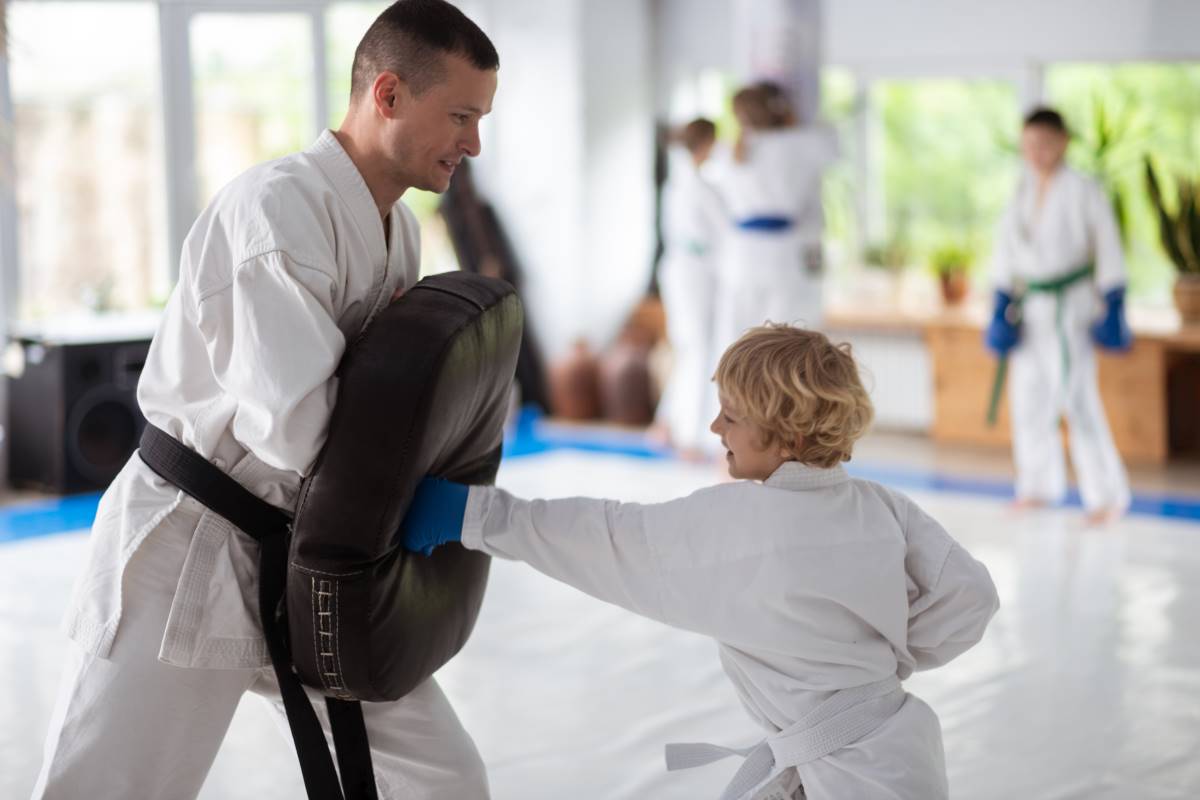
Three myths that need to die about children and weightlifting
You’re probably convinced that kids can benefit from weight training.
We also know that parents are overly cautious when it comes their children’s safety. This is for a good reason.
Before we discuss how to get kids to the gym, lets bust a few myths.
1. When is it safe to start kids on strength training?
Strength training is generally recommended for children aged seven to eight years.
It takes time for them to reach physical maturity, especially in terms of balance, proprioception, and body coordination.
The gym is a place where children can learn to act safely and responsibly.
It is important to remember that not all children grow at the same pace, so it’s up to you to decide whether or not to take your child to a gym.
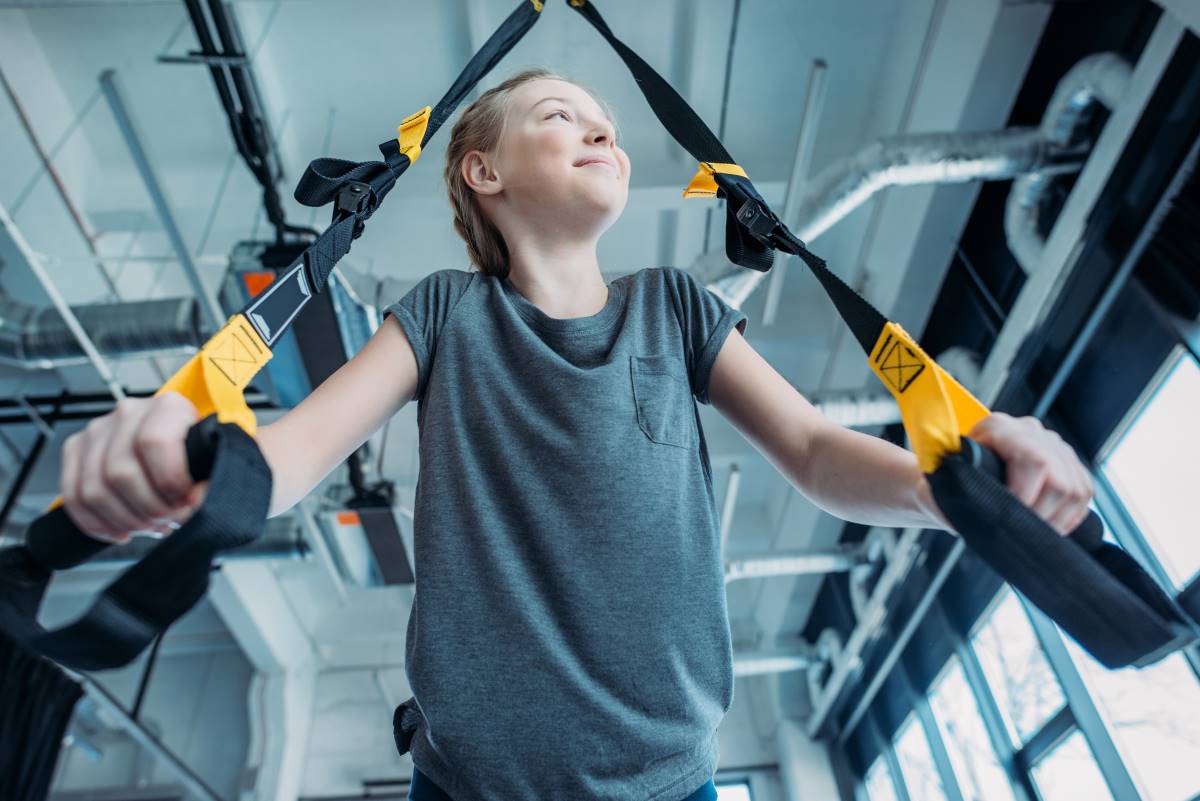
2. Does strength training stunt the growth of children?
The myth that weight lifting stunts the growth of children and adolescents persists.
This concern may have some validity in that damage done to the growth plates can hinder bone development [22]. Strength training, when performed safely and correctly under professional supervision, carries no more risk than any other sport or activity for youth [23].
Strength training is a great way to improve athletic performance, decrease fracture risks, and reduce the rate of sports injuries.
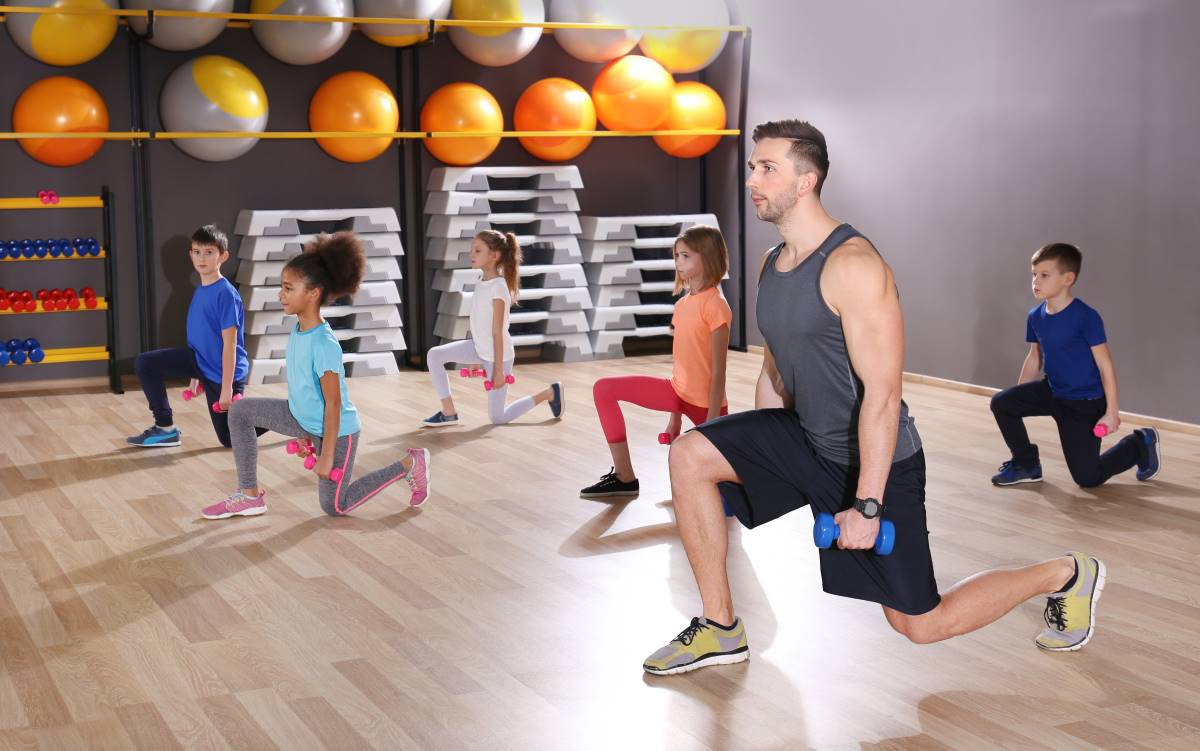
3. How much muscle can my child gain?
It would be so easy if it were that simple! As no adult has ever suddenly become ‘too thin’ or a ‘too muscular’ person, the same goes for children.
We can assure you that we have never seen a child get too strong, or gain too much muscle from following a well-designed training program.
Strength training in all ranges of motion can improve flexibility and mobility [29],[30],[31].
Strength training for adults and children is different. Children usually gain strength by neurological adaptations, while adults are more likely to build muscle.
The idea of suddenly becoming musclebound doesn’t affect most people, regardless of age.
What’s the best approach to getting the kids involved now that you are fully on board?
It’s time to have some fun!
Weight lifting for children: 5 golden rules
It is easy to get children interested in training and exercise by taking them to the gym.
The gym is not meant to be a playground. It can be dangerous if you don’t take care.
If you follow these five rules, you’ll be able to introduce your child safely, effectively and in a fun way to strength training.
1. Be patient
Do not rush your child to lift heavy weights. Spend time teaching them how to control the body and master basic movements.
It is best to begin with lighter weights at higher repetitions. Focus on technique and execution.
It’s not necessary to load them with heavy weights on the first day. Bodyweight exercises like push-ups, squats, and lunges are a great way to begin to develop motor patterns. They also carry a lower risk of injury.
You may have a few teething issues as you learn the correct technique, but remember that you too were once a beginner.
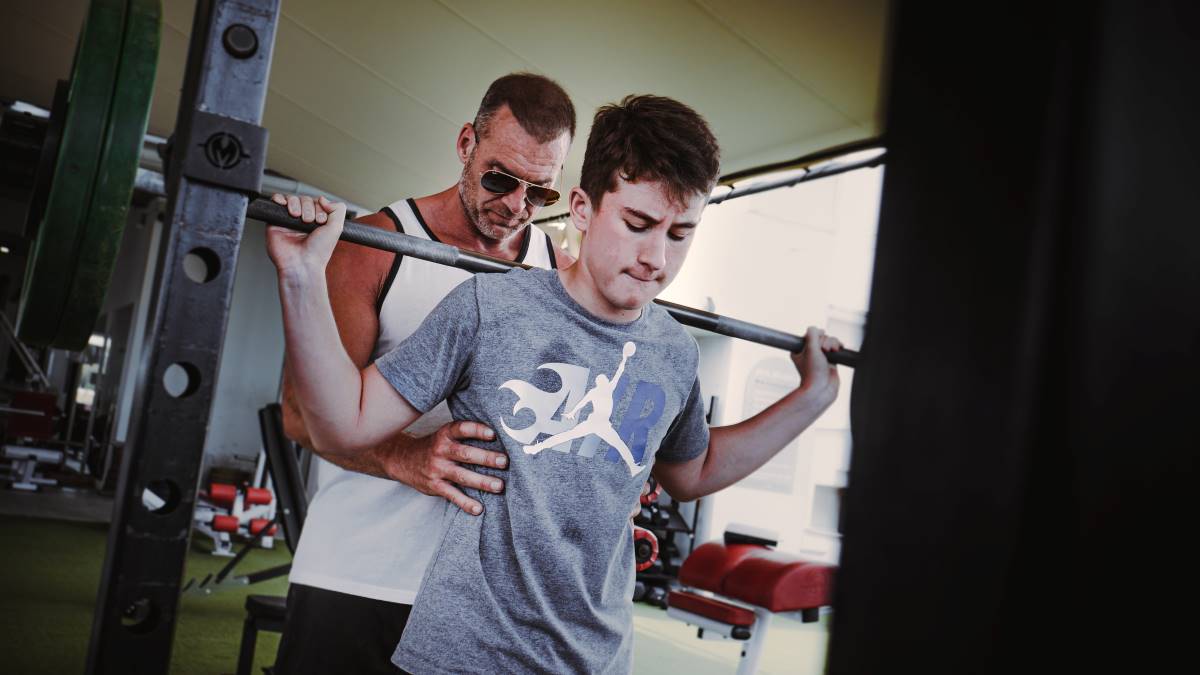
2. Education is the key
It’s a double-edged blade. How can you expect to inspire your children about health and fitness when you don’t know what you’re doing? It is important that you have a good understanding of nutrition and training to ensure your children are able to train effectively, safely and with enjoyment.
Learning by doing is another way to learn. Bring your child to the gym to help him or her experience the benefits of strength training.
3. There is no such thing as a’magical’ age
It is not a predetermined age when a child should start strength training. Before you begin to use dumbbells, it is important to keep in mind a few points.
Strength training is characterized by exercises that require a high level of skill and concentration.
Around seven to eight-year-old children develop their balance and coordination [32].
The younger the child, the more mature they need to be to understand and follow the instructions. They also must have the discipline to concentrate on technique instead of the weight.
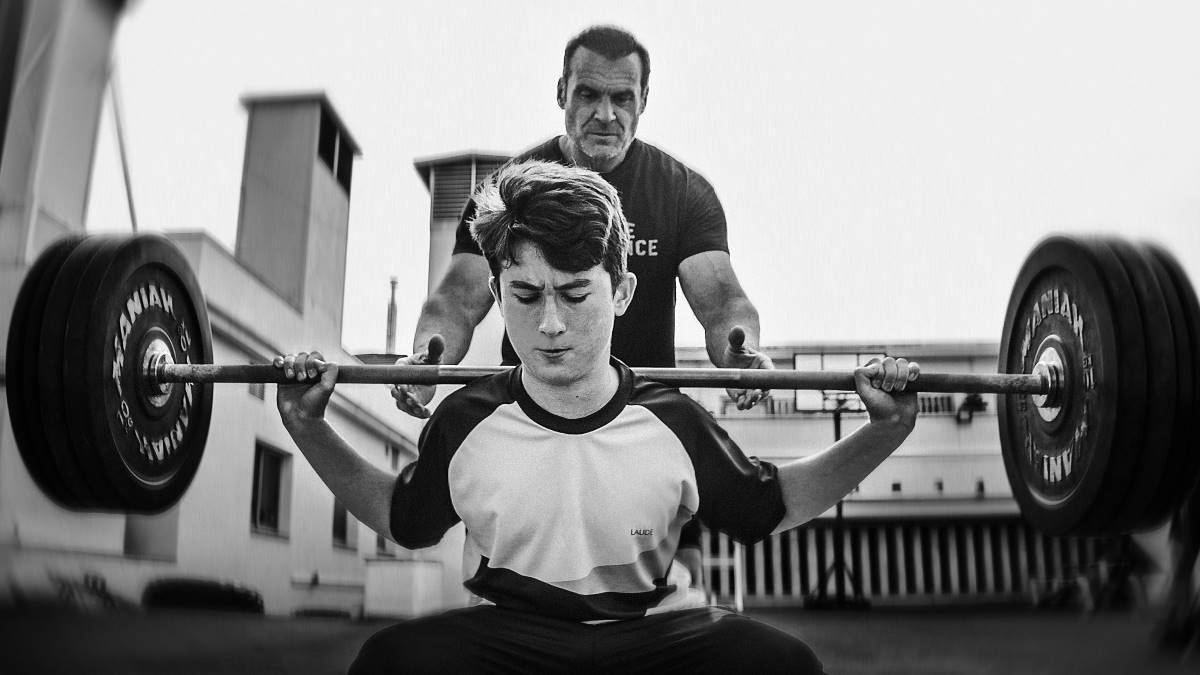
4. Beginner’s Guide
Lifting weights requires learning new movements, which is challenging for everyone.
Children’s training should be more functional and less aesthetic. Therefore, it is important to focus on exercises that involve multiple joints. Strength training programs should focus on exercises that involve multiple joints and target large muscle groups.
Instead of leg extensions, consider squats, push-ups and barbell presses. Rows and pull-ups are better than triceps curls. Keep your training interesting by incorporating a variety barbell, dumbbell or bodyweight exercises.
5. Make sure your children are well-supervised
You wouldn’t allow your child to learn how to drive, attend school without a teacher or play an instrument without supervision. Why would you allow them to lift weights without supervision?
When performed incorrectly and with poor technique, strength training can cause serious injuries.
The risk of injury or harm is greatly reduced when a fitness professional supervises and guides you.
Moreover, no two bodies are alike. A trainer qualified in child fitness can adjust exercises and programs to make sure they are safe and effective for your child.
Your kids may also be more receptive to fitness advice given by a professional than you are!
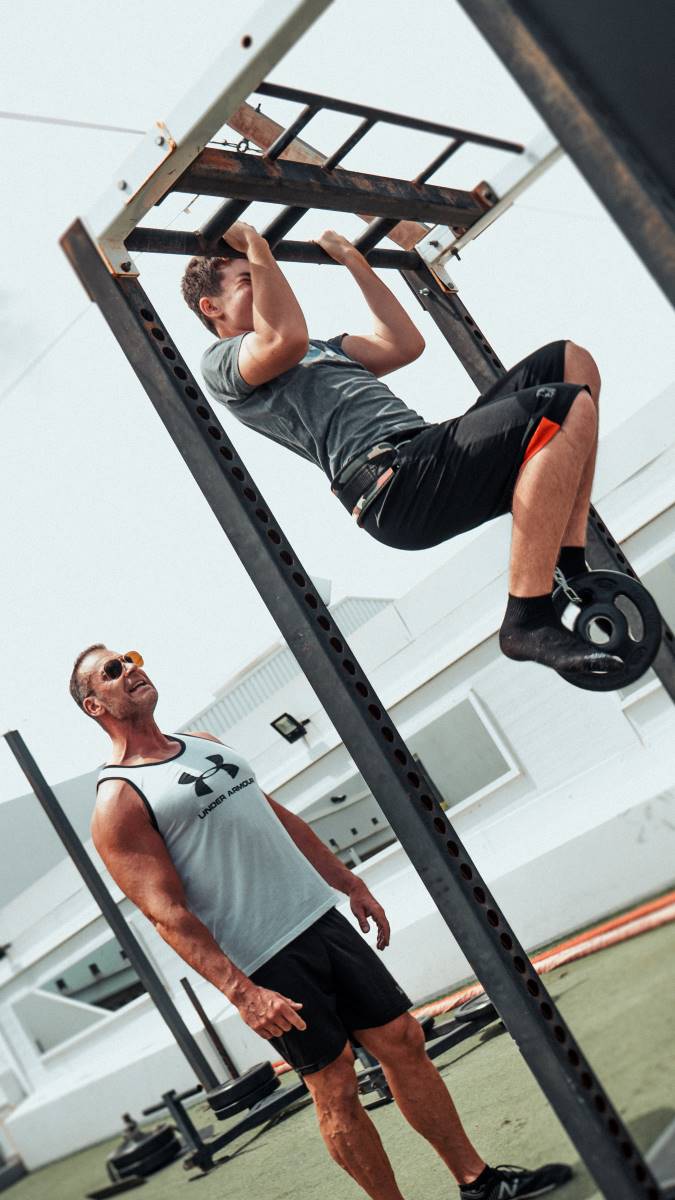
Take-away
Strength training is great for the physical and mental health of children!
It doesn’t have to be difficult. Be patient and focus on the form and technique.